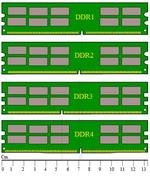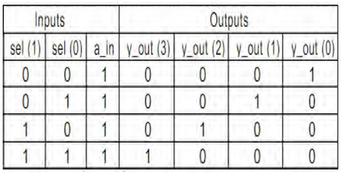Read/Write RAM VHDL Source Code
Advertisement
This document outlines the VHDL code for reading from and writing to a Random Access Memory (RAM). RAM serves as a data storage medium in diverse applications.
In the context of this code:
- 1K represents 10 address lines (since 2^10 = 1024)
- 8 indicates that the Data Bus has 8 lines. Thus, each memory location can hold 8 bits (1 byte).
- ADR:
in std_logic_vector (9 downto 0) - D:
inout std_logic_vector (7 downto 0) - CS:
in std_logic - OE:
in std_logic - WR:
in std_logic
VHDL Code
library IEEE;
use IEEE.STD_LOGIC_1164.ALL;
use IEEE.STD_LOGIC_ARITH.ALL;
use IEEE.STD_LOGIC_UNSIGNED.ALL;
entity fifo1_2 is
Port (
Clk : in std_logic; -- processing clock
we : in std_logic; -- write enable signal
wadd : in std_logic_vector(6 downto 0); -- write address to store the data into ram
radd : in std_logic_vector(6 downto 0); -- read address to read the data from the ram
data_in : in std_logic_vector(31 downto 0); -- input data to store into ram
data_out : out std_logic_vector(31 downto 0) -- output data from memory
);
end fifo1_2;
architecture Behavioral of fifo1_2 is
-------------------------------------
-- RAM declaration
type ram is array(127 downto 0) of std_logic_vector(31 downto 0);
signal ram1_1 : ram;
--------------------------------------
-- Signal declaration
signal r_add : std_logic_vector(6 downto 0);
begin
process(Clk, we)
begin
if Clk'event and Clk = '1' then
if we = '1' then
-- In this process writing the input data into ram
ram1_1(conv_integer(wadd)) <= data_in;
end if;
r_add <= radd;
end if;
end process;
data_out <= ram1_1(conv_integer(r_add)); -- Reading the data from RAM
end Behavioral;
Advertisement
 RF
RF





